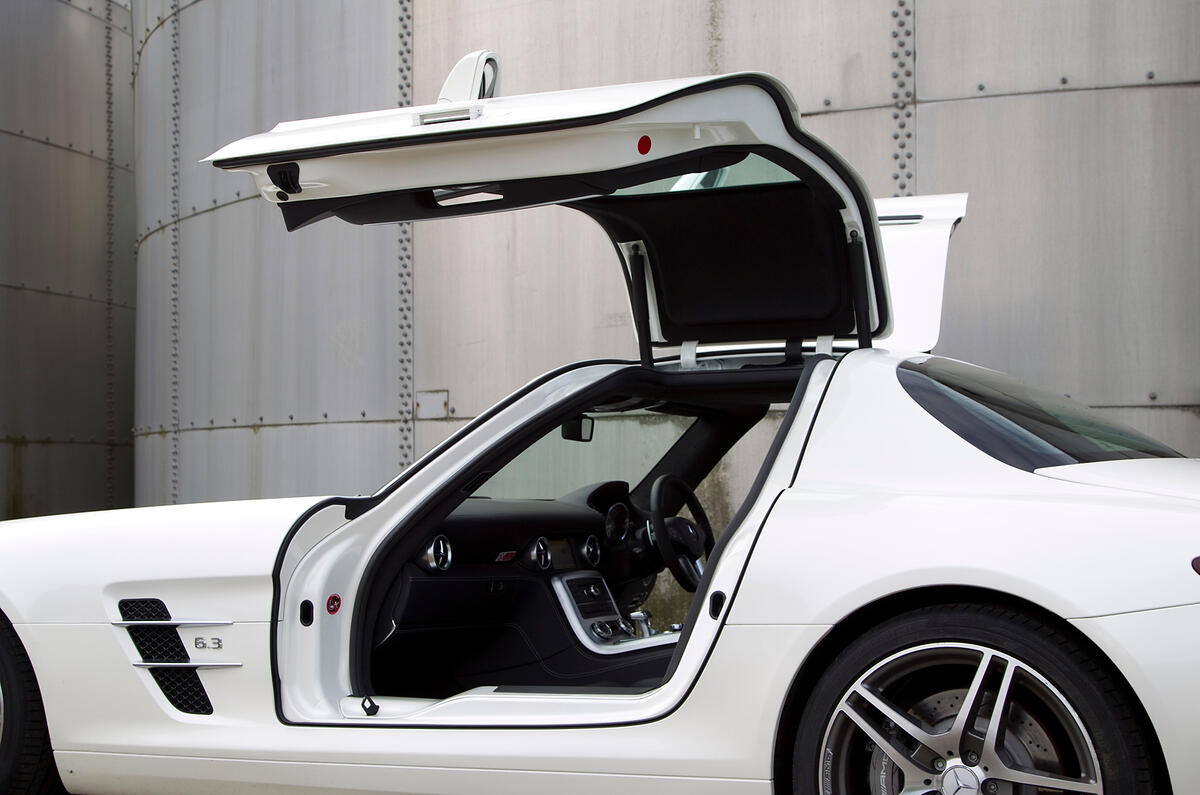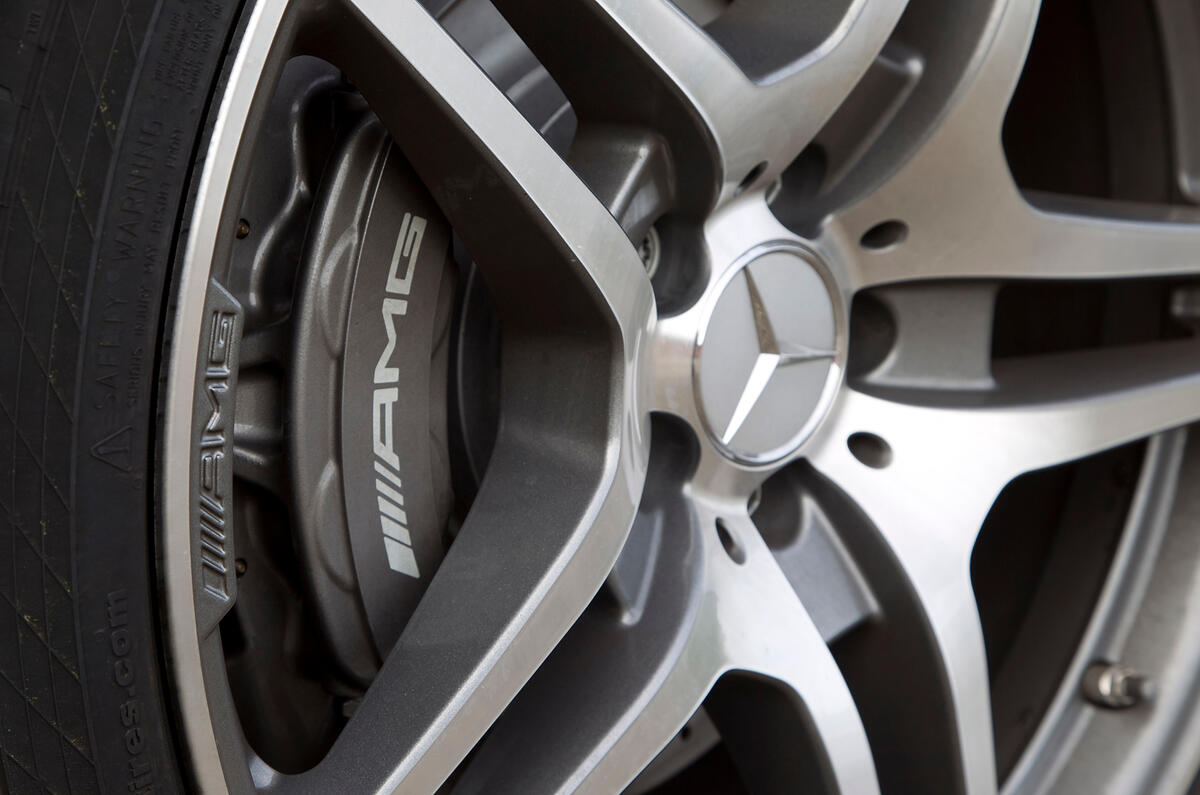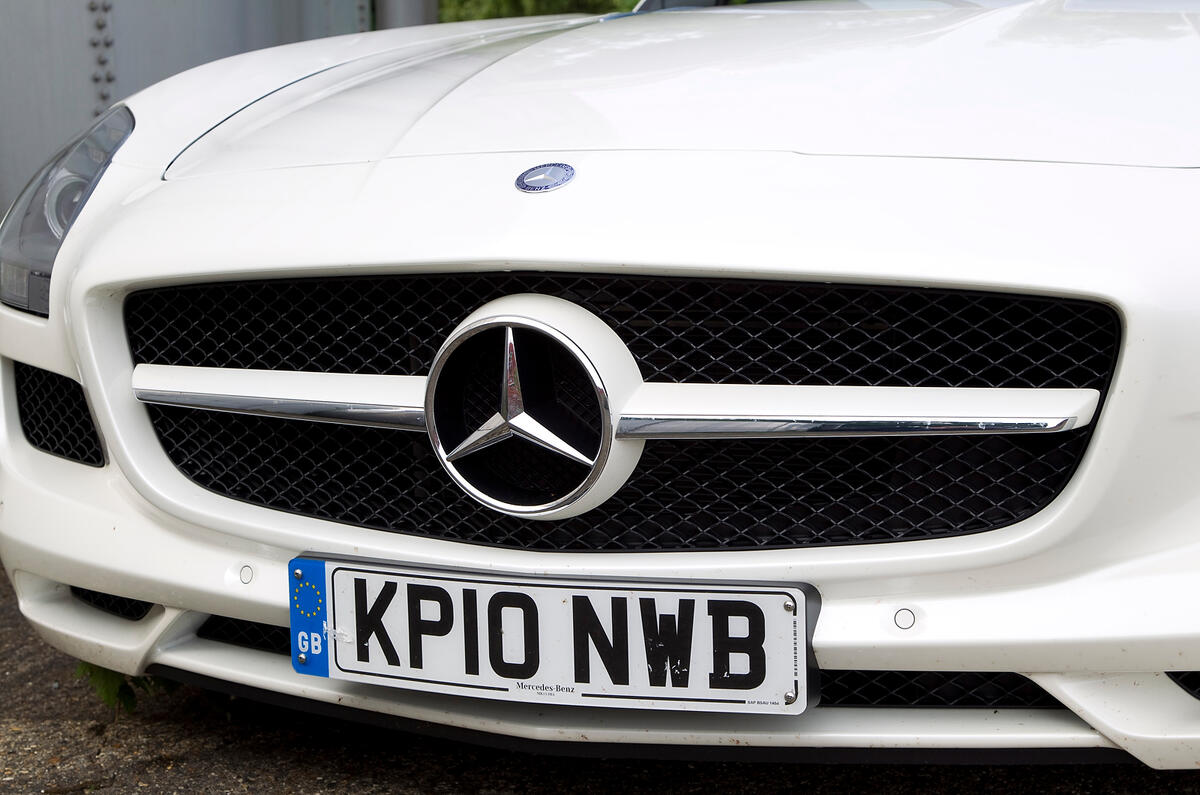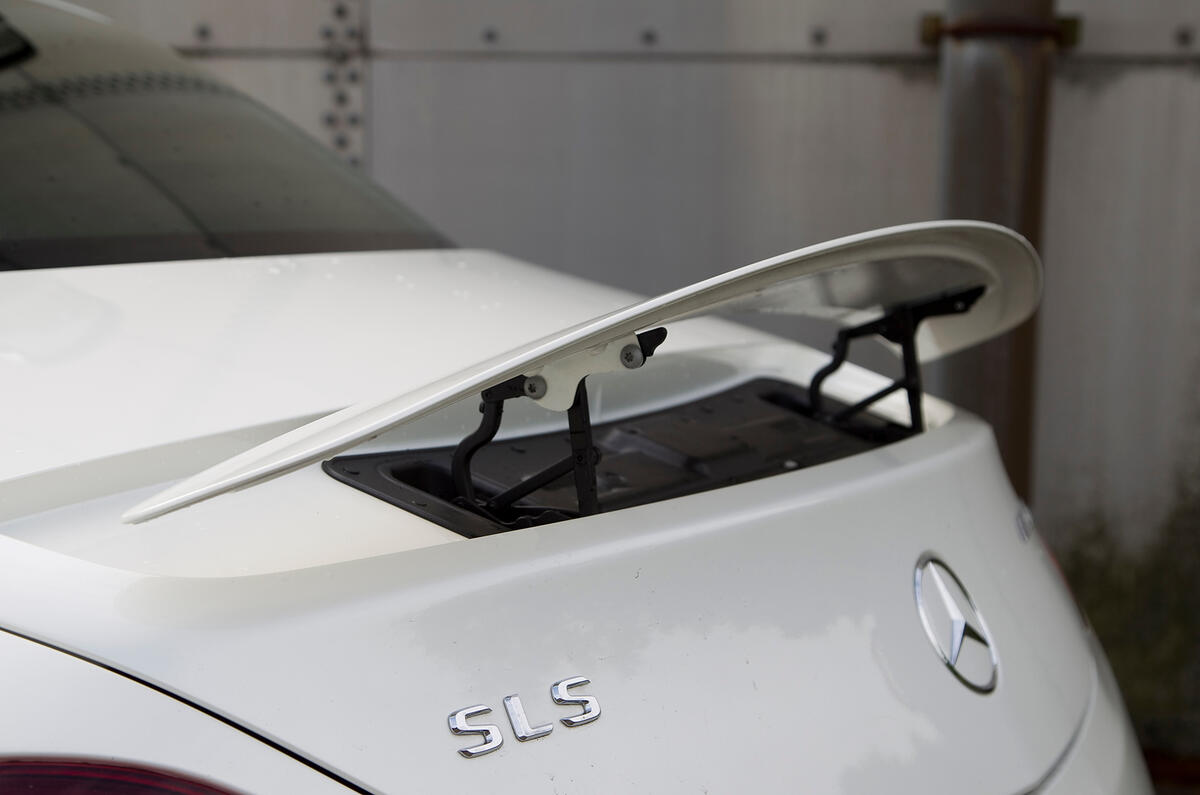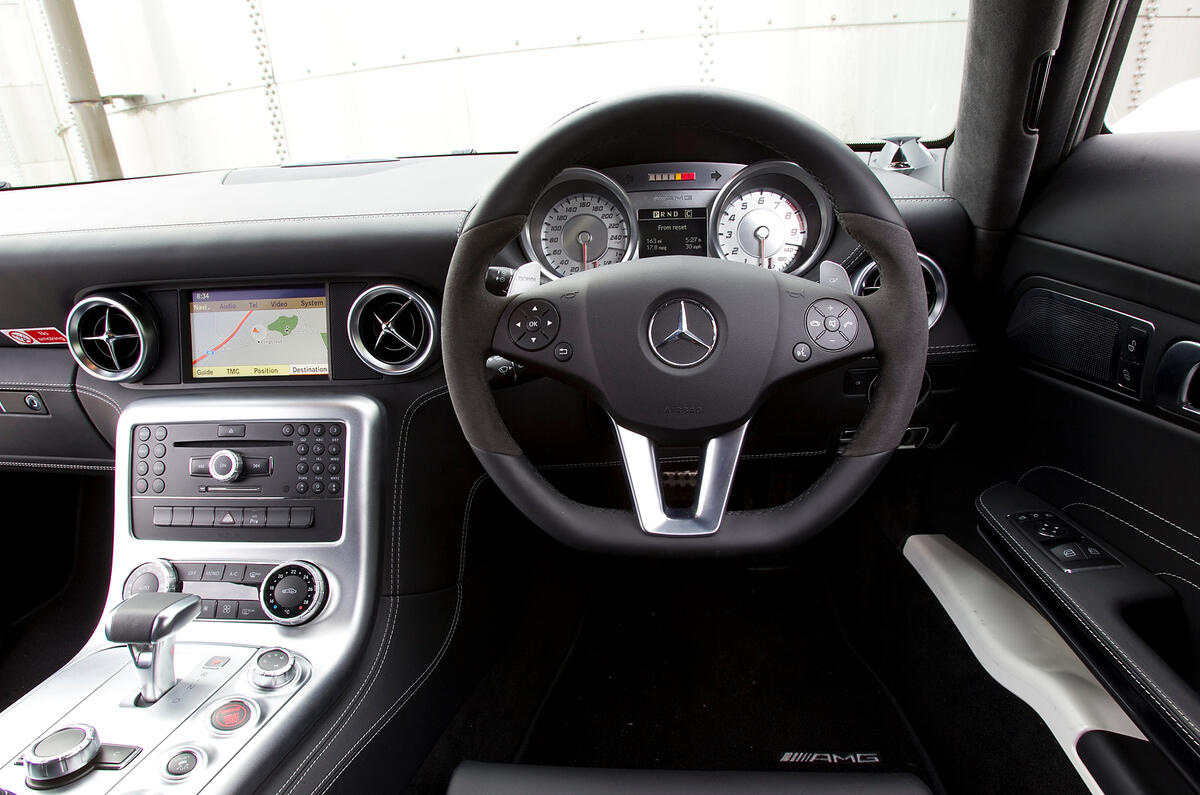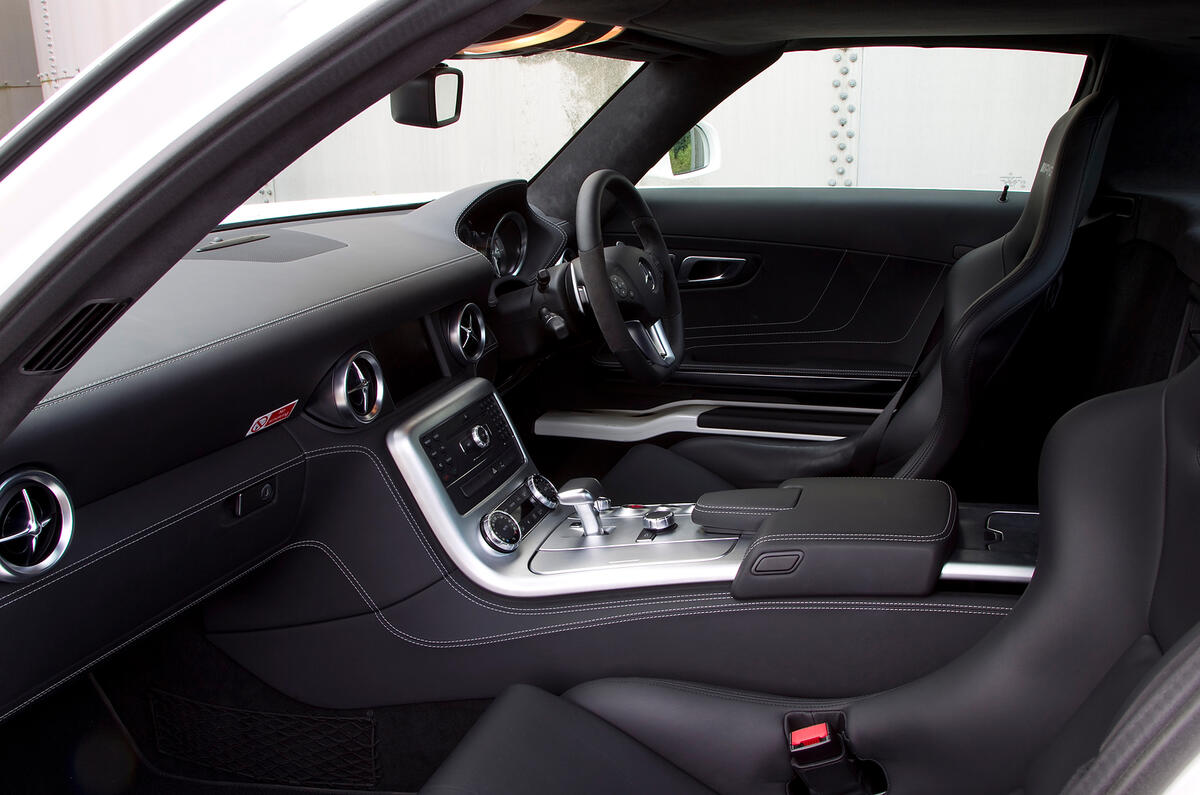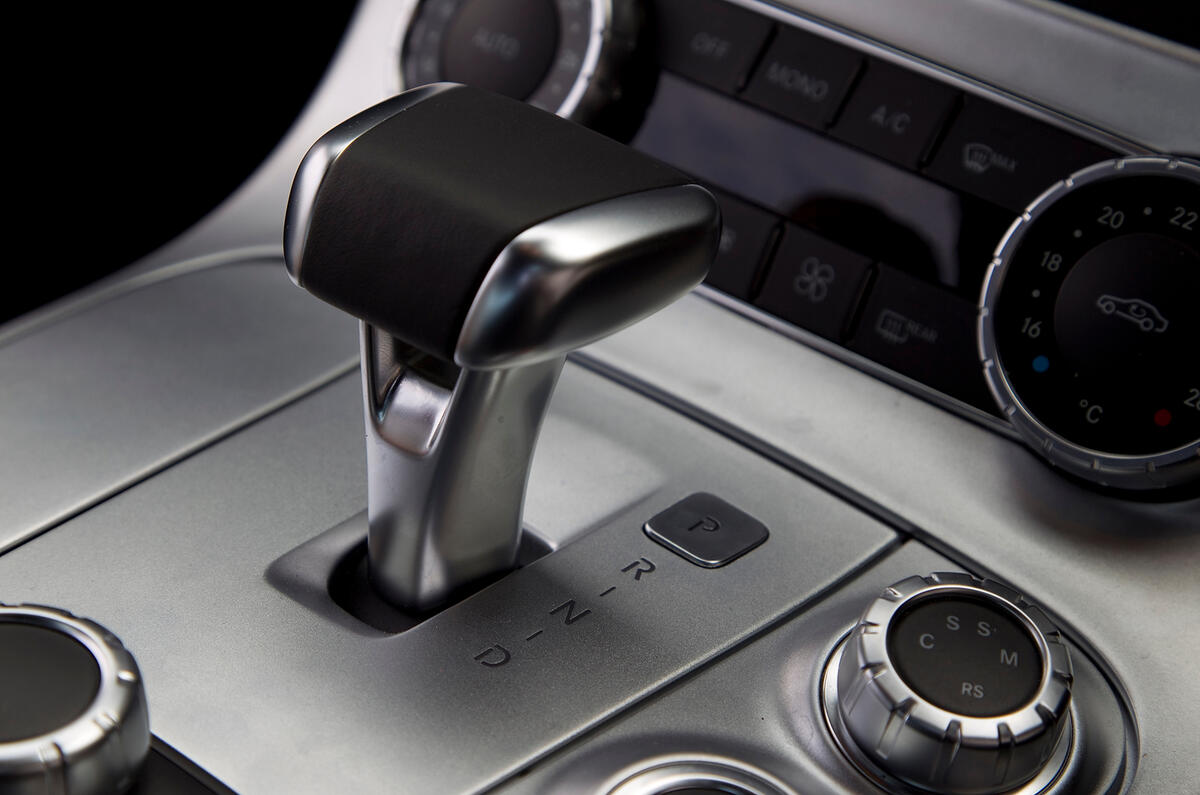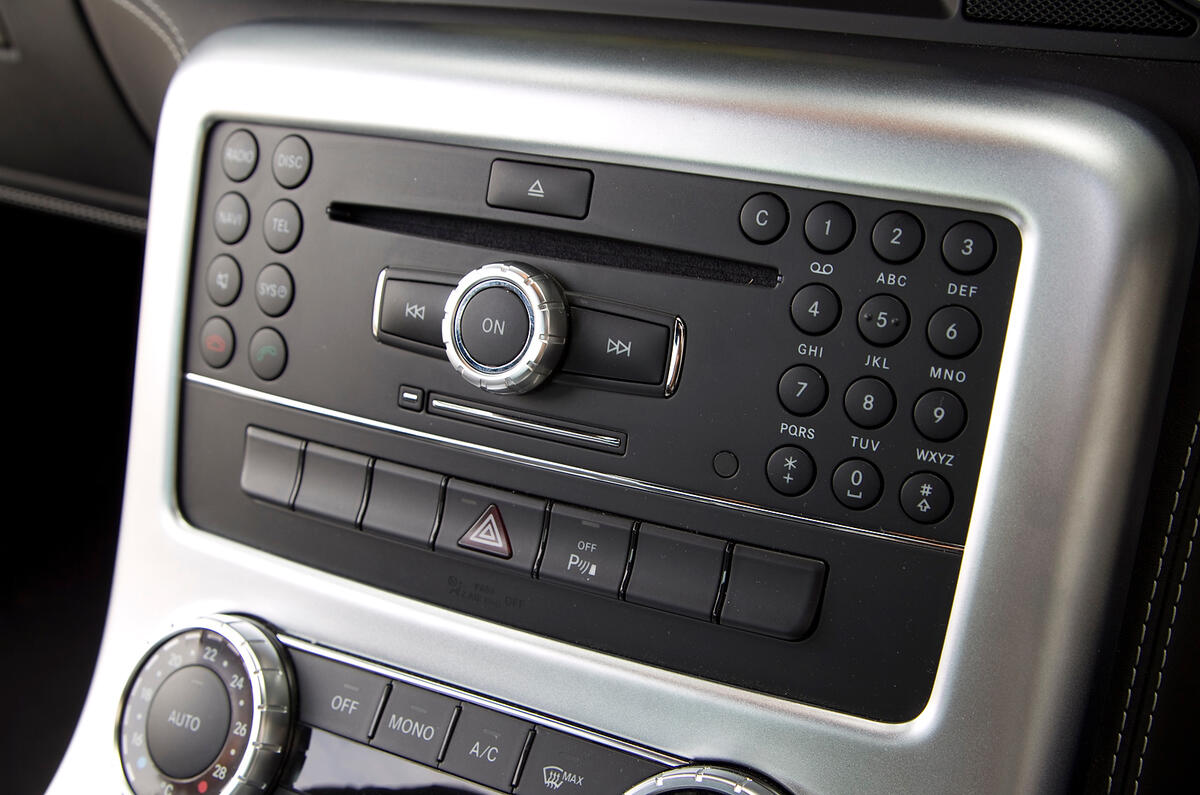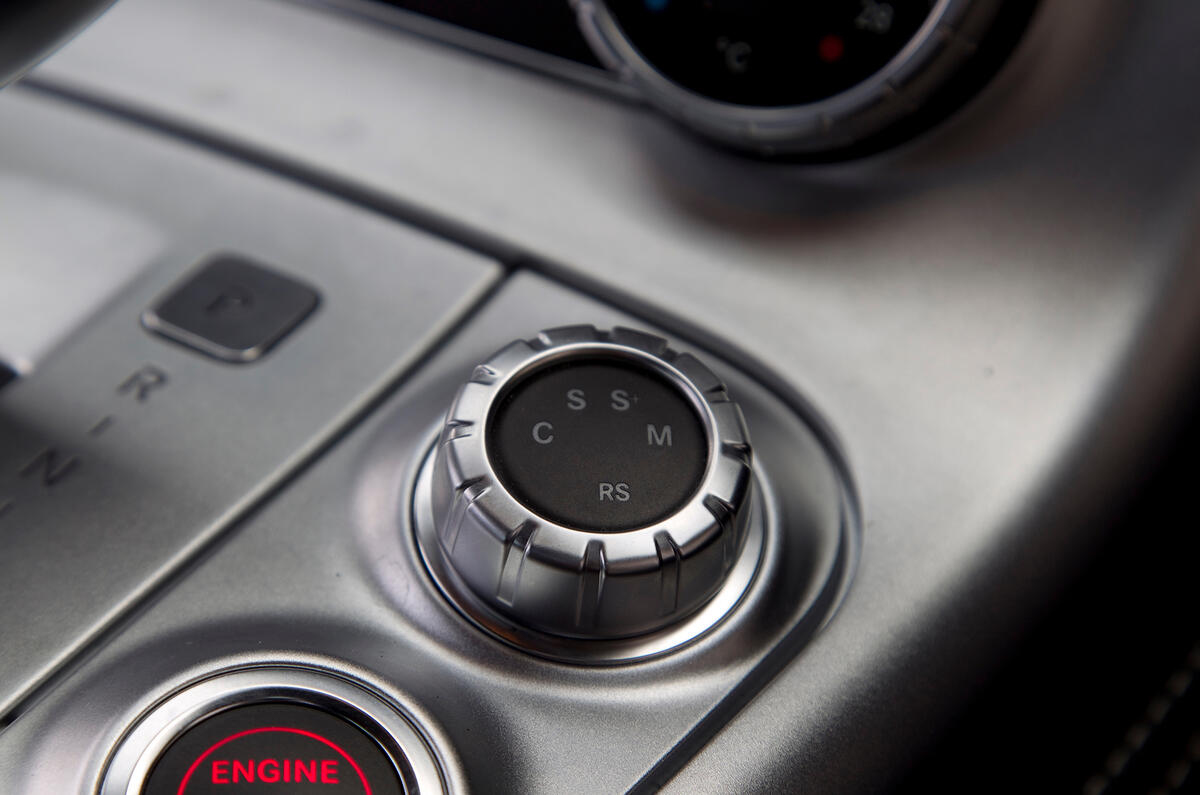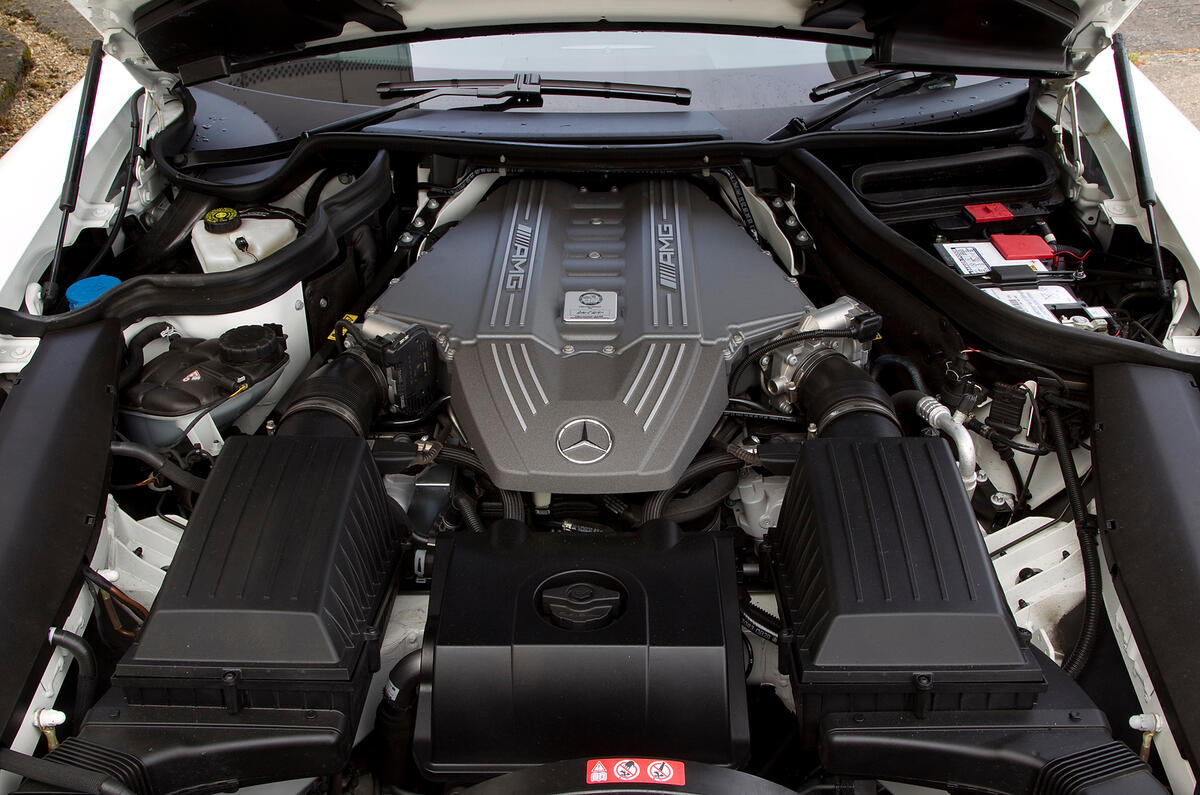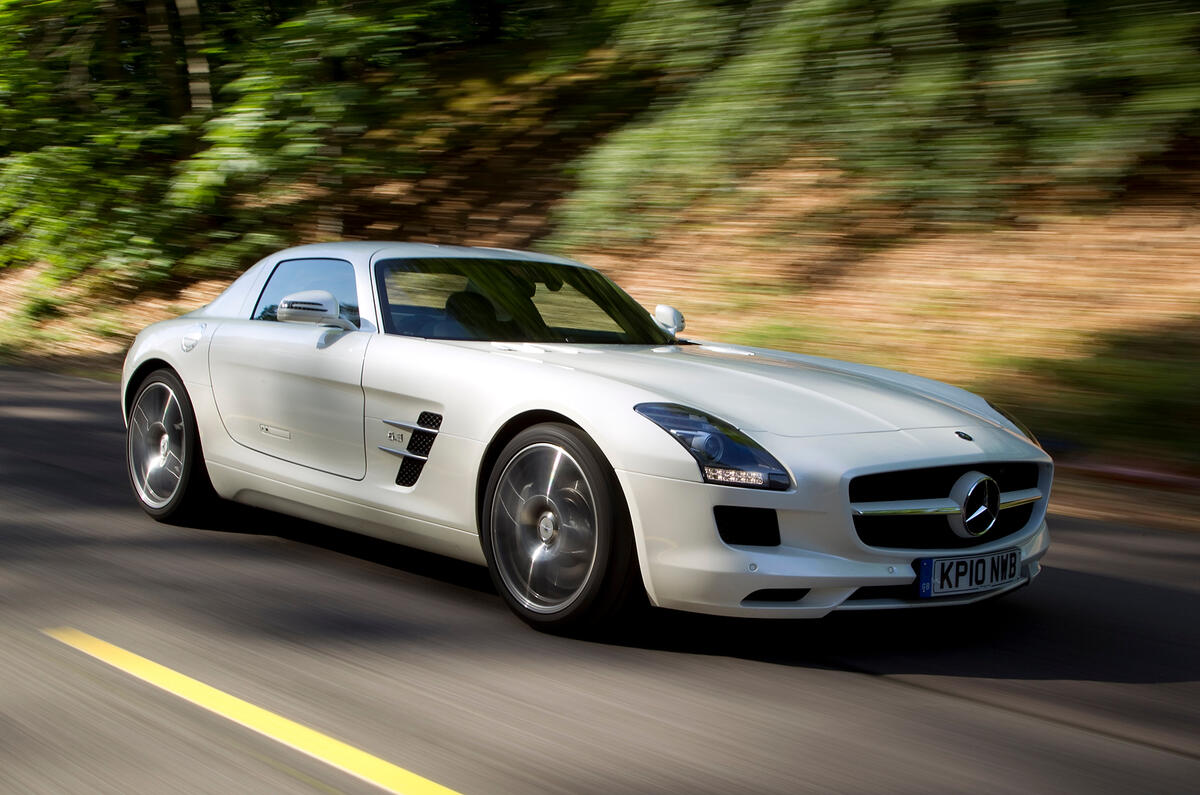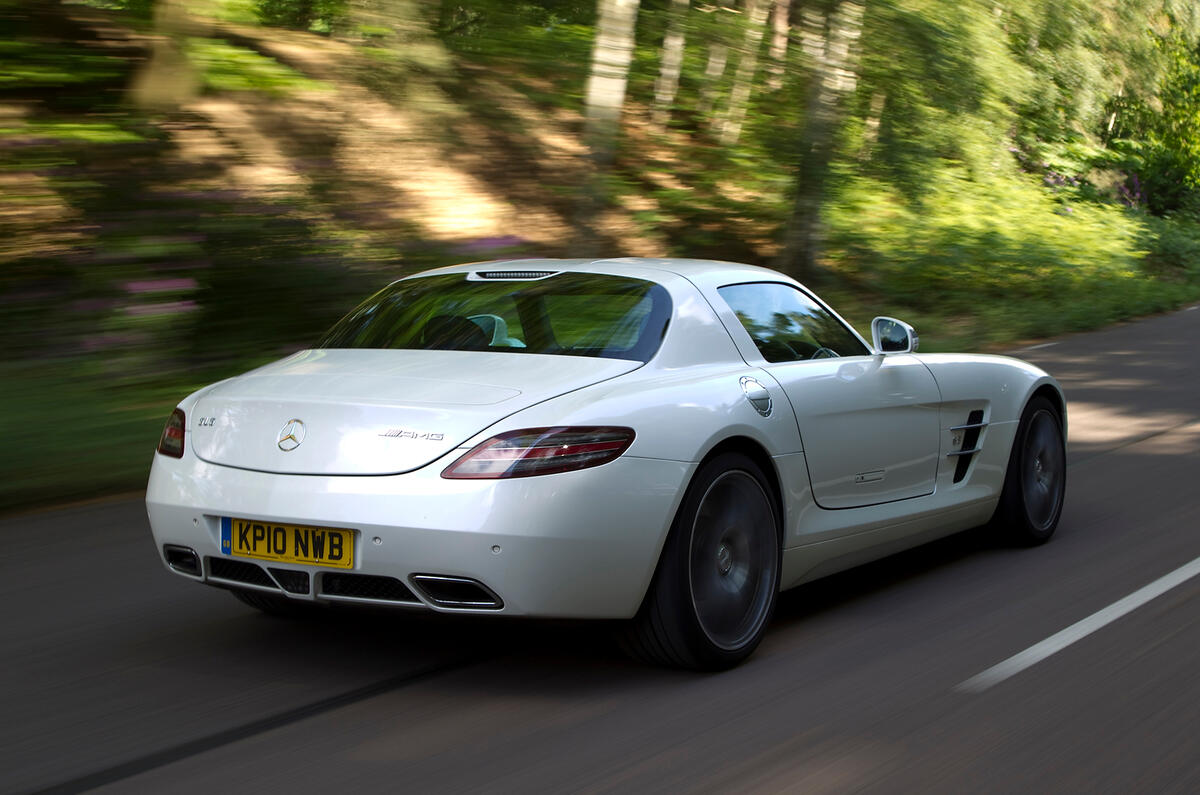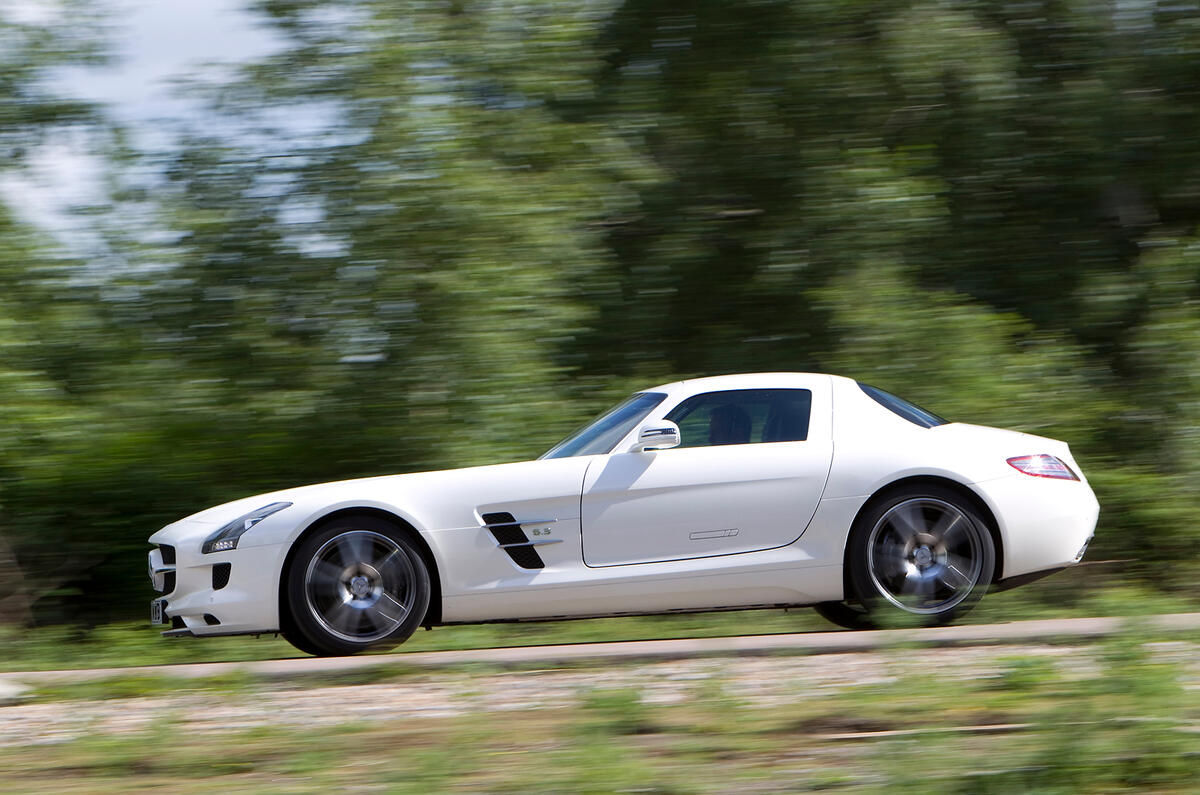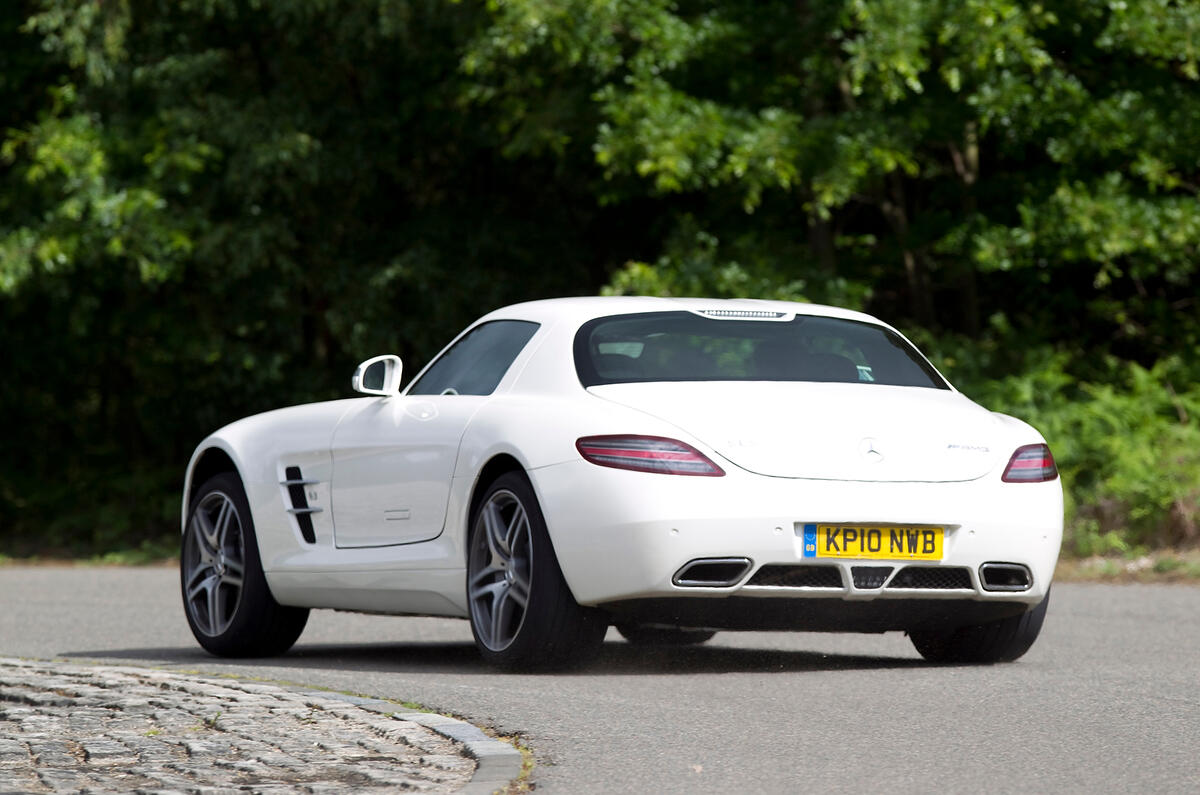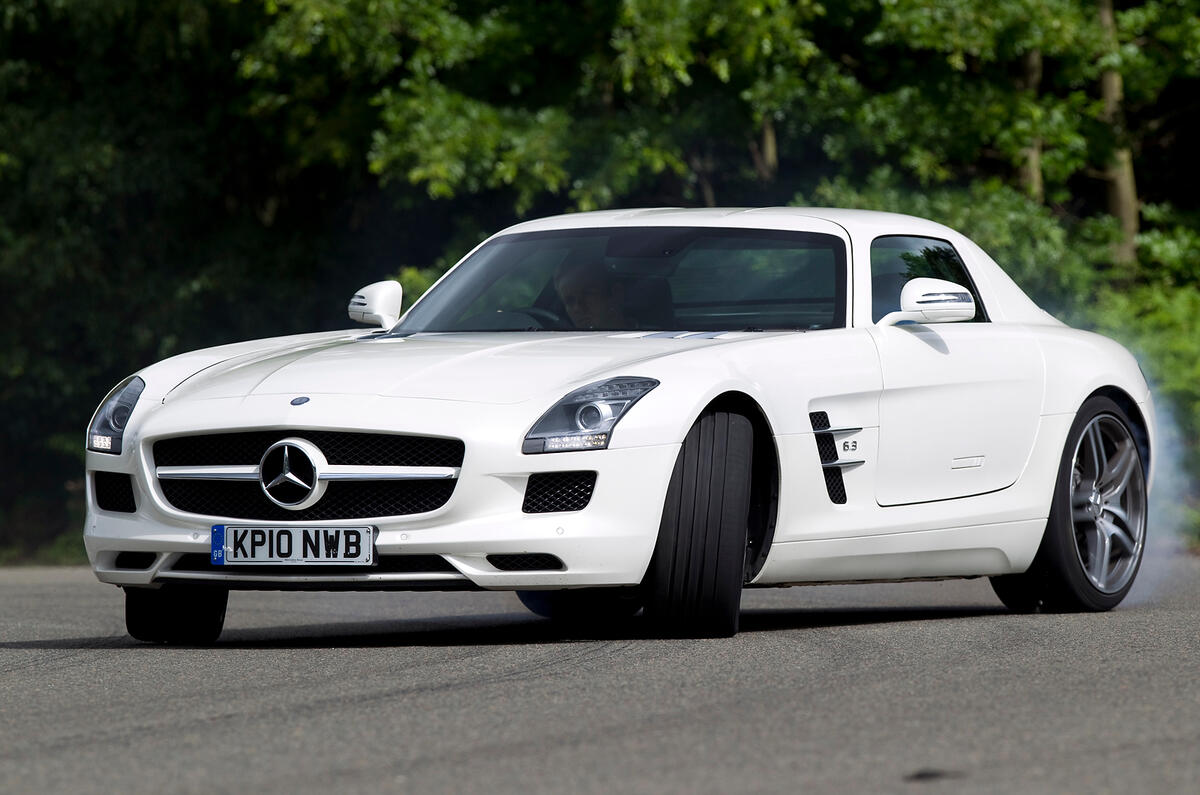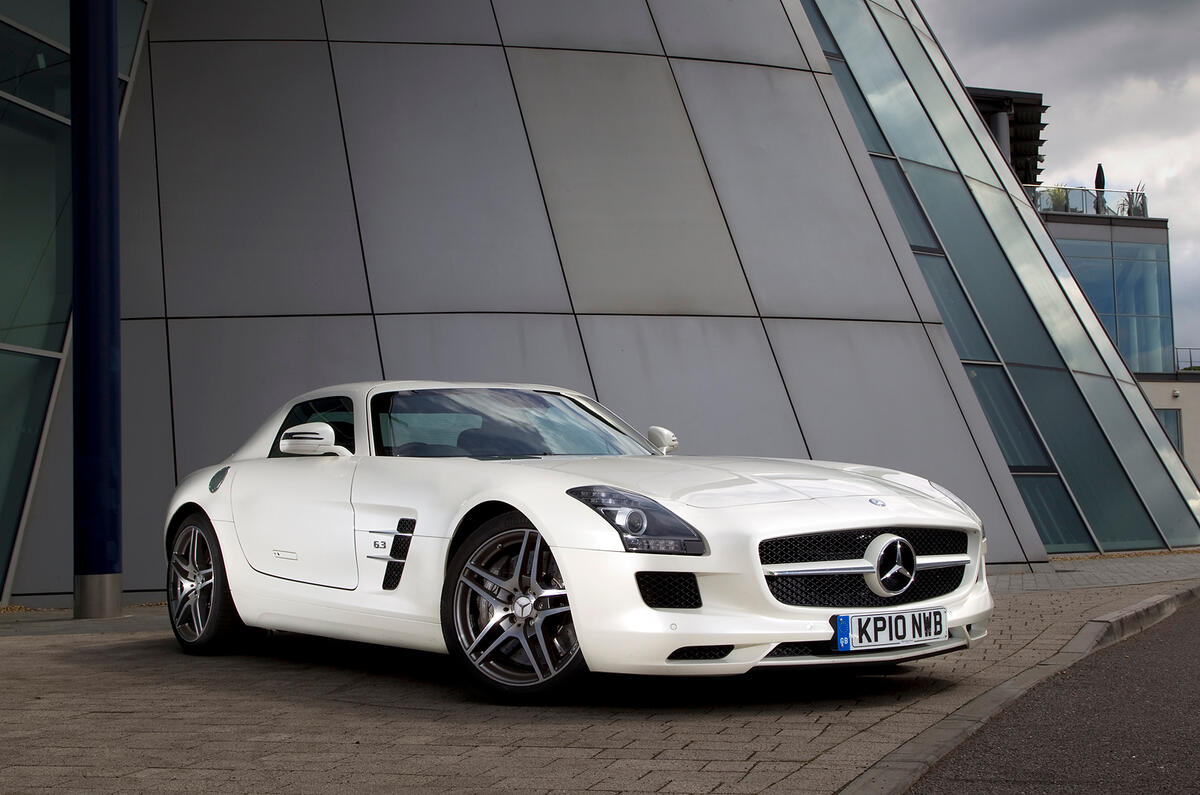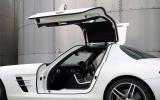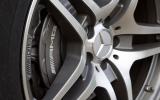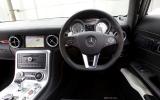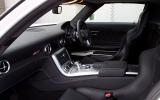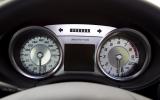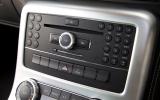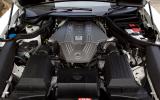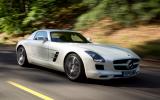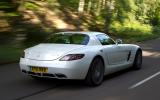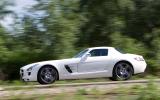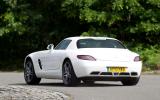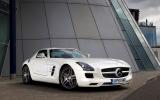Arguably the Mercedes SLS’s immediate predecessor is the Mercedes-McLaren SLR, but Mercedes would prefer instead that we see inspiration for the SLS in the 1954 300SL. Which is understandable. The story starts when Mercedes adapted the underpinnings of the 1951 300 saloon, using a spaceframe chassis and aluminium body panels, to create the race-only W194. After this finished second and fourth in the 1952 Mille Miglia, followed by victory in the 24 Hours of Le Mans, a road-going version was created: the iconic W198 300SL.
The first thing anyone wants to talk about, of course, with this SLS coupe is the doors. Certainly, there is considerable excitement at the return of a Gullwing Mercedes. And talk about them we will, discussing exactly how practical they are in real use, as well as highlighting the positives and negatives of losing them on the Roadster model.
However, there is so much more to the new Mercedes-Benz SLS AMG than those doors. The SLS has been developed entirely in house. And by ‘in house’, Mercedes actually means the tuning firm AMG, which became an official Mercedes department in 1990. This is the first time AMG has been given a clean sheet to build a road car from the ground up, and one with the billing that it will be something altogether more serious than the familiar ‘big-engine-and-comfortable-Mercedes’ AMG recipe. The talk this time is of an all-out supercar.




